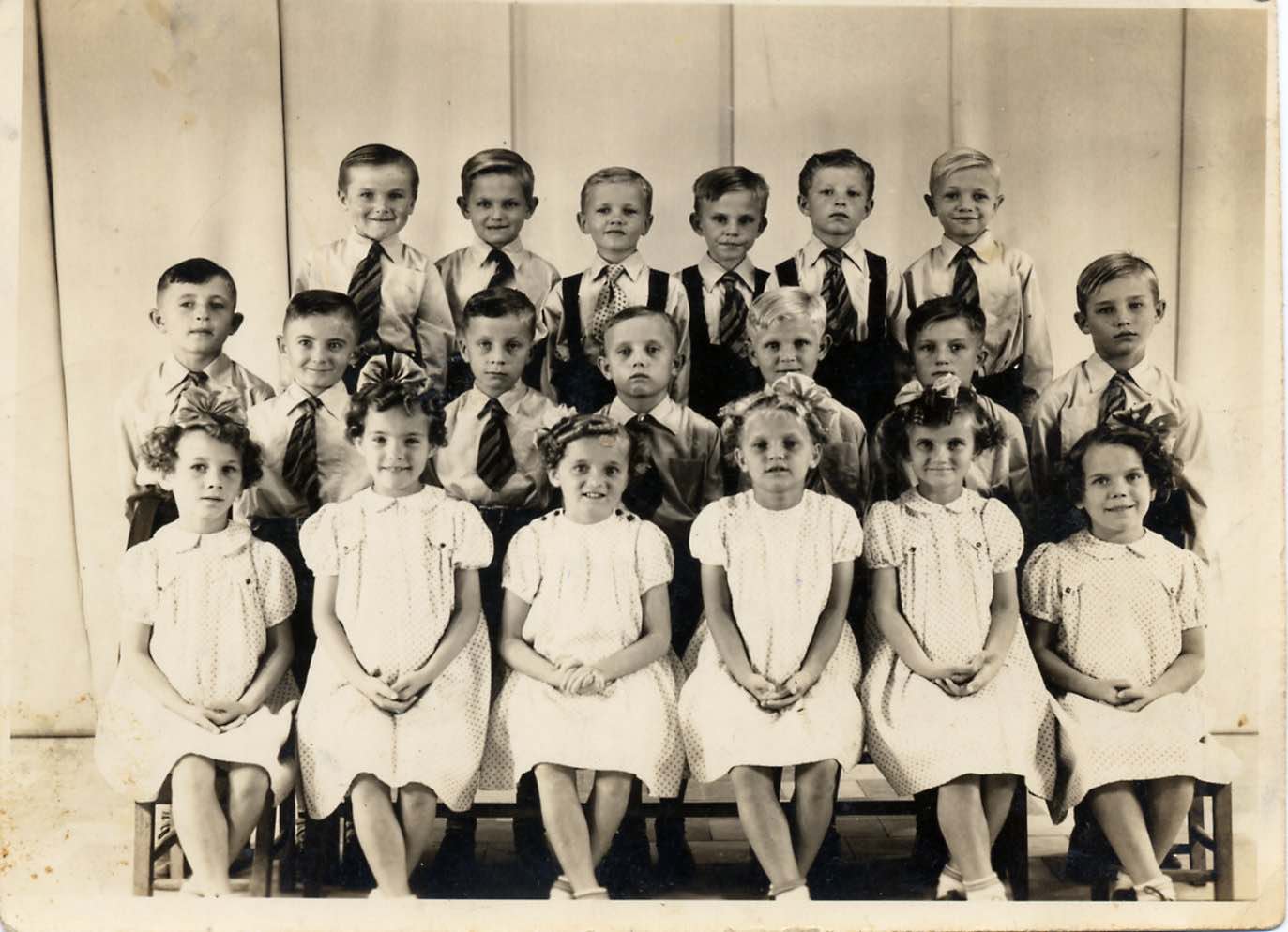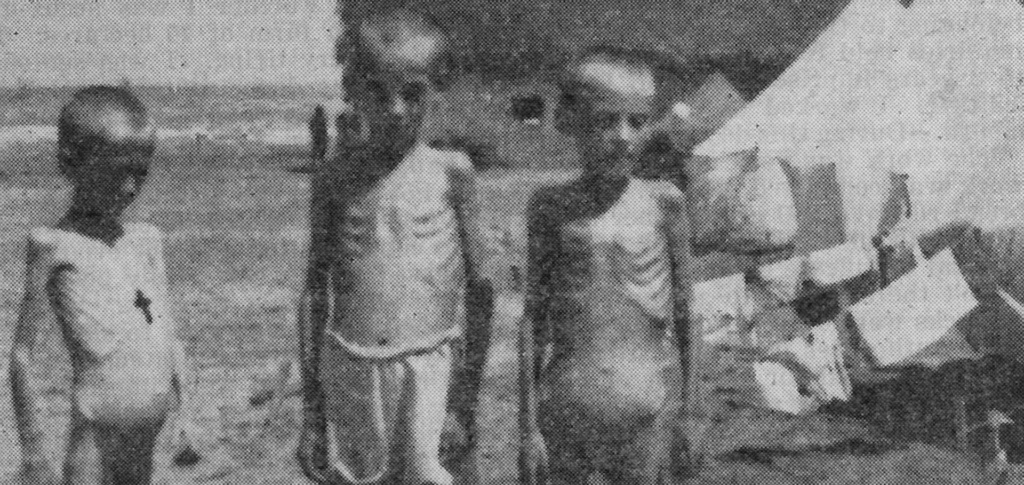By Ted Lipien
America had its own shameful episode of war crimes, not nearly as brutal as Soviet deportations to the Gulag forced labor camps of many groups and nationalities, but still inexcusable detention of American citizens of Japanese origin and forcing them into internment camps during the Second World War. It is entirely possible that Roosevelt administration officials may have gotten the idea of interning the Japanese-Americans from Stalin’s mass removals of undesirable ethnic groups viewed as potential enemies.
The same U.S. government Office of War Information (OWI), which lauded Stalin and covered up his crimes in press releases for domestic distribution and Voice of America (VOA) shortwave radio broadcasts abroad1, produced propaganda films to justify the internment of American citizens.2
When two groups of Polish refugee children–former victims of forced deportations by the Soviets from eastern Poland–had arrived in the United States in 1943 for a brief stopover before being transported to a resettlement camp in Mexico, they were kept under isolation and military guard in former detention centers for Japanese-Americans in southern California. The Roosevelt administration had refused requests to give Polish refugees from Russia political asylum in the U.S. although it helped to transport them and provided a grant (some sources describe it as a loan to the Polish government in exile based in London) to pay for their care.
The U.S. Office of War Information took photos of Polish refugees in Iran in 1943 after they had been brought back to health following their evacuation from the Soviet Union a year earlier. They no longer looked malnourished and ill. OWI lied in a press release on Polish refugee children traveling to Mexico by presenting them as fleeing from Nazi occupation.
The Roosevelt administration hid evidence of executions of Polish war prisoners in Soviet captivity and other atrocities in Stalin’s Russia. Photographs of Polish refugees taken in Iran in August 1942 by Lieutenant Colonel Henry I. Szymanski, a U.S. Army liaison officer to the Polish Army, were classified as secret. One of them showed three sisters, ages 7, 8, and 9, Polish evacuees from Russia, in a state of severe emaciation.
Lt. Col. Szymanski’s photographs remained classified for ten years. They were published for the first time in 1952 by the bipartisan Select Committee to Conduct an Investigation of the Facts, Evidence and Circumstances of the Katyn Forest Massacre, Eighty-Second Congress, also known as the Madden Committee after its chairman, Rep. Ray Madden (D-IN). In his report, which the Roosevelt administration also classified, Lt. Col. Szymanski described the fate of Polish children in Soviet Russia kept secret from Americans.
The purpose of isolating the Polish refugee children at the U.S. Army camps in southern California was to prevent them and their caregivers–also evacuees from Russia who had survived (many had not)–from talking to American media and revealing the extent of Soviet brutality. Roosevelt administration officials and propagandists wanted to protect Stalin from bad publicity in a mistaken belief that it could undermine the military alliance with the Soviet Union against Nazi Germany. Instead, Americans, including policy makers, were mislead about Stalin’s intentions by Soviet and U.S. government propaganda as it was being spread in government circles in Washington and through American media.
While there were some disclosures of pro-Soviet U.S. government propaganda during the war (the Roosevelt administration made illegal attempts to censor or shut down media critical of Russia), strong bipartisan criticism and actions to put a stop to such manipulation of domestic public opinion on behalf of a foreign power did not emerge until after the war.3
One of the camps in which Polish refugee children were briefly housed was Santa Anita facility, sometimes euphemistically referred to in U.S. government documents as Santa Anita (Calif.) Assembly Center.4 When the Polish children arrived, the Santa Anita camp no longer had any Japanese-American prisoners. By then, they had been moved to permanent internment camps.
Some of the children were reportedly traumatized when they saw a barbed wire fence and a camp guarded by soldiers with rifles. They were further traumatized, according to some accounts, by being transported on sealed trains with blacked out windows. While these were comfortable American passenger trains and American soldiers were friendly, locked doors and windows reminded them of their previous journeys in dark and inhumanly overcrowded Soviet cattle trains with no sanitary facilities which had taken them over a period of weeks to labor settlements in Siberia and Central Asia, with many deaths along the way.
The Polish refugee children were treated with great kindness by the few Americans who were allowed contact with them, but as reported by journalist and a Catholic Relief Services worker Eileen Egan, while being transported from the United States to Mexico, they “could not leave the carriages to mingle with American citizens.”5
Julian Plowy, who was three-years-old, when he arrived in Mexico with his mother and older sister, recalled that the help the Polish children received in Mexico from the Mexican people, Polish-American nuns and American workers of Catholic Relief Services helped them to rebuilt their faith in God and humanity. Plowy wrote that love for Poland and religious faith instilled in them by their parents and teachers strengthened their drive to never give up. He and members of his family who had survived the Soviet captivity came to the United States after the war. One of the photos in the Plowy family album shows a group of young Polish refugee children at their camp called Colonia Santa Rosa near the city of León in the central Mexican state of Guanajuato. (Photo: Courtesy of Julian Plowy.)
Photo Credits

- Polish refugee children at Colonia Santa Rosa near the city of León in the central Mexican state of Guanajuato. Photo: Courtesy of Julian Plowy.

- Three sisters, ages 7, 8, and 9, Polish evacuees from Russia, August 1942
Photos by: Lieutenant Colonel Henry I. Szymanski, U.S. Army
Source: The Katyn Forest Massacre: Hearings Before The Select Committee to Conduct An Investigation on The Facts, Evidence and Circumstances of the Katyn Forest Massacre; Eighty-Second Congress, Second Session On Investigation of The Murder of Thousands of Polish Officers in The Katyn Forest Near Smolensk, Russia; Part 3 (Chicago, Ill.); March 13 and 14, 1952 (Washington: United States Government Printing Office, 1952), pp. 459-461.
Link

- Title: Santa Anita (Calif.) Assembly Center – A panorama of Santa Anita Center showing finished construction
- Creator(s): United States. Army. Signal Corps.
- Date Created/Published: [1942]
- LINK
Notes
- See: Cold War Radio Museum, “April 20, 1943 — Congressman Woodruff warns of Soviet propaganda in Voice of America broadcasts,” http://www.coldwarradiomuseum.com/april-20-1943-congressman-woodruff-warns-of-soviet-propaganda-in-voice-of-america/ ; “Senator Taft’s early warning of Soviet propaganda in WWII Voice of America,” April 2, 2018, http://www.coldwarradiomuseum.com/senator-tafts-early-warning-of-soviet-propaganda-in-wwii-voa/ and “U.S. Congressman on Katyn Massacre Coverup at Voice of America,” September 17, 2017, http://www.coldwarradiomuseum.com/u-s-congressman-on-katyn-massacre-coverup-at-voice-of-america/.
- Office of War Information (OWI), January 31, 1943, “Japanese Relocation,” C-SPAN, https://www.c-span.org/video/?323978-1/japanese-relocation.
- The bipartisan Select Committee to Conduct an Investigation and Study of the Facts, Evidence and Circumstances of the Katyn Forest Massacre, also known as the Madden Committee, said in its final report issued in December 1952: “In submitting this final report to the House of Representatives, this committee has come to the conclusion that in those fateful days nearing the end of the Second World War there unfortunately existed in high governmental and military circles a strange psychosis that military necessity required the sacrifice of loyal allies and our own principles in order to keep Soviet Russia from making a separate peace with the Nazis.” The committee added: “For reasons less clear to this committee, this psychosis continued even after the conclusion of the war. Most of the witnesses testified that had they known then what they now know about Soviet Russia, they probably would not have pursued the course they did. It is undoubtedly true that hindsight is much easier to follow than foresight, but it is equally true that much of the material which this committee unearthed was or could have been available to those responsible for our foreign policy as early as 1942.” The Madden Committee also said in its final report in 1952: “This committee believes that if the Voice of America is to justify its existence, it must utilize material made available more forcefully and effectively.” A major change in VOA programs occurred, with much more reporting being done on the investigation into the Katyń massacre and other Soviet atrocities, but later some of the censorship returned. Radio Free Europe (RFE), also funded and indirectly managed by the U.S., never resorted to such censorship, and provided full coverage of all communist human rights abuses. See: Select Committee to Conduct an Investigation and Study of the Facts, Evidence and Circumstances of the Katyn Forest Massacre, The Katyn Forest Massacre: Final Report (Washington: United States Government Printing Office, 1952), 10-12. The report is posted on the National Archives website: https://archive.org/details/KatynForestMassacreFinalReport.
- Densho Encyclopedia, “Santa Anita (detention facility),” https://encyclopedia.densho.org/Santa_Anita_(detention_facility)/ and United States. Army. Signal Corps., “Santa Anita (Calif.) Assembly Center – A panorama of Santa Anita Center showing finished construction,” Library of Congress Prints and Photographs Division Washington, D.C. 20540 USA, http://www.loc.gov/pictures/item/2001695914/.
- American journalist Eileen Egan, who was then a Catholic Relief Services (CRS) worker helping the Polish children, wrote, “As a sealed train had been in the beginning of the trek of agony that carried simple people across three, four and, in the end, all five continents, of the world, so also the train that brought them into León and Colonia Santa Rosa was, in effect, also a sealed train.” See: Eileen Egan, For Whom There Is No Room: Scenes from the Refugee World (New York: Paulist Press, 1995), 19.




5 Comments
Comments are closed.